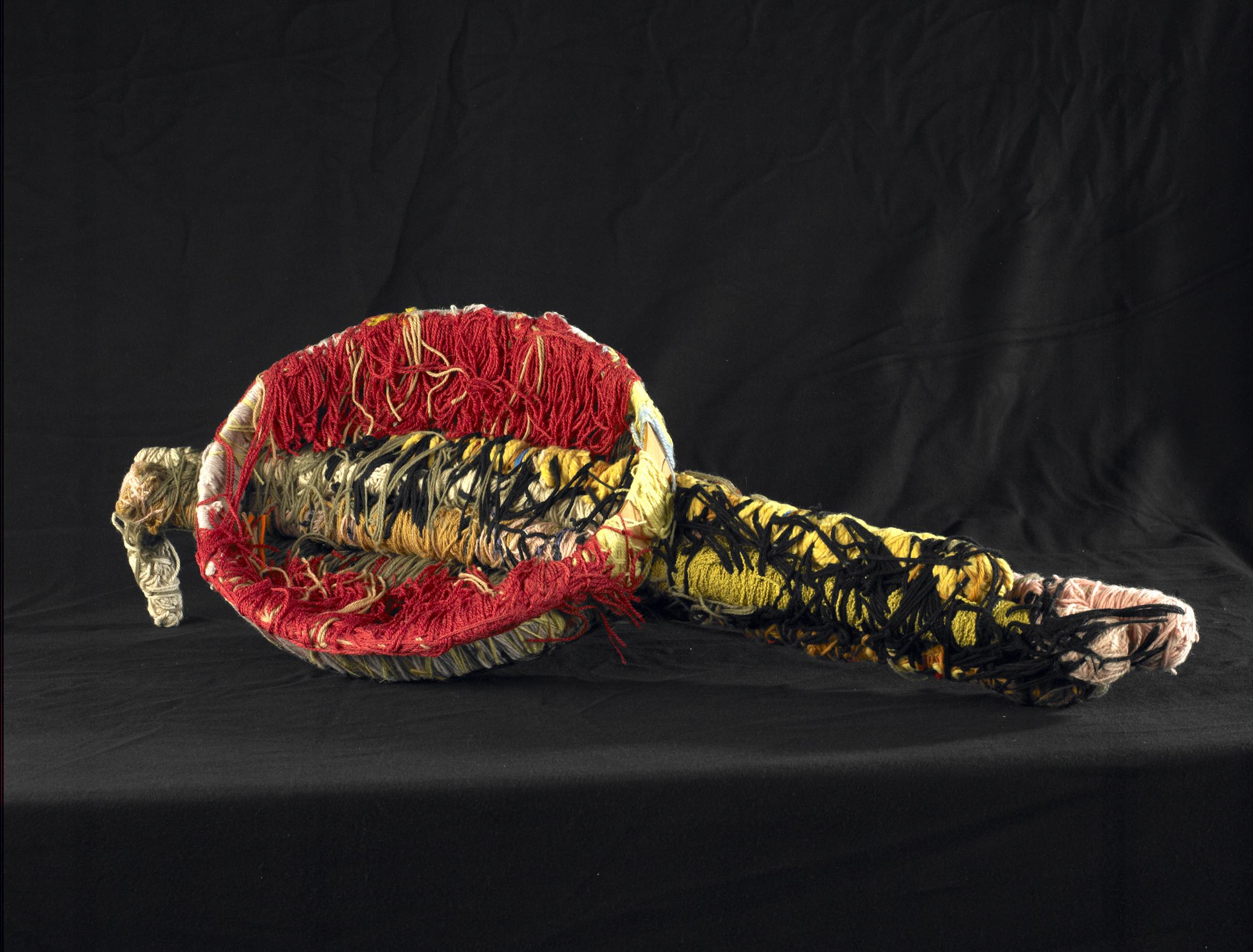Judith SCOTT (1943 Cincinnati, Ohio – 2005 Oakland, California), whose work will be on show in a solo exhibition for the first time in Austria, is an internationally acclaimed object artist, who practiced her talent in the use of yarns, waste fabrics and every day objects after a diagnosis of Down-Syndrome and deafness had left her isolated for 35 years. She intertwined her materials into grandiose organic sculptures. In 1987, urged on by her close twin sister Joyce Wallace Scott, she first visited the Creative Growth Art Center in Oakland, California. That institution offers studio spaces to people with special physical or mental needs and in addition boasts a fruitful, professionally operating gallery.
Having met the artist Sylvia Seventy, Judith Scott developed her own style, which was completely autonomous and highly expressive. A representative of Outsider Art, she went on to gain international recognition, her works forming part of many important collections. Judith Scott used wool, yarn and thread – often seen as `female´ materials – and wound them, knotted them, tied them around everyday objects, covered them up. The objects disappeared underneath a thick layer of colorful bunches. Thus, she created objects of a nature that had never been seen in art history before. A representative of Outsider Art, she has gained international recognition and is represented in many important collections. The works on show are on loan from the Creative Growth Art Center in Oakland, California, as well as from private collections.
Judith Scott – the Artist
Three-dimensional artworks are very rare in Art Brut, and women are a minority among the artists. Judith Scott not only forms part of that minority, she also represents a definite highlight in international Art Brut. She was a woman with a difficult personal fate, who unexpectedly emerged from her isolation after many years of introversion and created innovative and unique artworks out of conventional materials and objects. She is one of the most important artists of the twentieth century, not only in Art Brut, but also in the context of contemporary art.
shields.!
New Guinea is a country where Stone Age-old cultures had survived until only a few decades ago. Those cultures not only led to the formation of over 800 languages on one island, they also breathed creative life into objects used in daily and cultural events. The lack of technology – no iron was available – meant that all cultural accomplishments had to be achieved with the materials and possibilities nature itself had to offer.
Real and ritual wars, fought exclusively by men, made shields a requirement. They not only helped deflect arrows and spears, but also acted as symbols of affiliation to an ancestral culture that drew its strength from the ancestors’ power. The shields were meant to intimidate the opponent; at the same time they became creative experimental fields for their highly specialised creators. A wooden sheet sculpted from air roots of trees is turned into the artist’s canvas. Here he creates his abstract images using natural pigments. Far into the twentieth century, the valleys of the New Guinea highlands have thus been a cradle of unique artworks from a Western point of view. The works on show – among them rare exhibits from the so-called “pre-contact era”, the time before any contact with Western civilisations - come from Australian and European exhibitions.
The Highlands of New Guinea – an historical and cultural overview:
Contrary to the coastal regions of Papua New Guinea, which were colonized by the British and German empires, vast areas of the highland with a population of over a million people remained undiscovered until the mid 30s of the 20th century. The inhabitants of the highlands are called “Papua”. Their ancestors were hunters and gatherers who established themselves in the fertile valleys as early as 30.000 years ago. The “Austronesians” on the other hand, ancestors themselves of the Polynesians, settled in the coastal areas only 5.000 years ago. In the highland comprising around 500.000 acres the inhabitants speak a variety of different, yet related languages. All of them belong to the Trans New Guinea languages, indicating a common root. The central regions of the Papua New Guinea highlands, east and west of the great Wahgi valley, allowed for trade routes, communication and exchange of ideas – those regions have always been the most densely populated. On the other side of the border the Baliem valley of Western Papua sustained a very large population. The trade in shells, feathers, oil, salt and stone tools flourished along those valleys over long distances. But those movements were undertaken only in groups: single persons never travelled far beyond the borders, the distrust of strangers being an important factor in highland life. Thus, cultural differences developed parallel to the many languages.
Johann Feilacher on “judith & shields.!”:
This exhibition presents works side by side that could not be more different from each other: `feminine´ wool in the hands of a woman who created contemporary art without ever having taken an interest in the art of her time, much less having been part of its world during her lifetime; and `masculine´ objects, hailing from a culture that’s removed from today by millennia and primarily serving a military and ritual purpose.
Both of them have one thing in common: their originality – their production was uninfluenced by the norms and tendencies of the twentieth century, yet the receptive development of Western culture was necessary to appreciate them as art. A seeming paradox, which meets the onlooker’s wish for the Unknown, the New and the Foreign.
Johann Feilacher is the curator of the exhibition and artistic director of the museum gugging.
Catalogue
“judith & shields.!” Published by Johann Feilacher. Monograph “judith.! scott” together with the catalogue “shields! art from new guinea” in one volume. 88 pages each. Residenzverlag publishing company.



